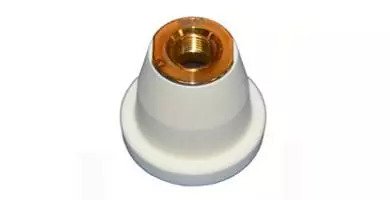We have heard and read a lot about laser engraving, cutting, and marking. In this article, we are going to discuss laser ablation. Let’s understand what it is, its process, and factors one needs to consider.
What is laser ablation?
It is a process in which using laser beam precision it removes layers of solid metals. The beam will irradiate the surface and expose it to radiation.
What is the process of laser ablation?
The process works by focusing a laser on a substrate and removes material that is on the surface. The amount it removes depends on the intensity, pulse length, and wavelength of the laser and material. The area absorbs the laser and breaks down the chemical bond in that area. While choosing a laser machine try to choose the one which has Trumpf laser parts or Amada laser parts.

With a low level of laser flux, the material which focuses absorbs the laser energy and changes to a gaseous state. The higher level of laser flux, the material it focuses upon usually converts to plasma. It is possible to undergo the process using pulsed fiber laser and continuous-wave laser. The first method is very common due to the high level of laser intensity.
Laser ablation has many benefits over traditional methods of processes like thin-film removal.
Whereas, another solution has to undergo many processes i.e. costly, time-consuming, inflexible, and has high risks. The process is more efficient, reliable, and cost-effective.
What are the uses of laser ablation?
The ablation process has many usages. The whole process undergoes with least heat useful to transfer the surrounding material. This means the process will have no effect on the parts of the materials which you don’t use. It is great on materials like plastic, metal, ceramic, biological tissues, etc.
This advancement in fiber lasers helps you focus on small specific spots to get the correct results. It also determines the concentration levels of a particular chemical or material on a surface. You can achieve it by generating bright plasma on the surface and then analyzing this to see what is present.
It is a friendly process to determine chemical analysis compared to traditional methods.
You can use this process to deposit a film on a surface and produce things like nanomaterial or superconducting materials. You can also use this for the micro structuring of an object.
Following are some of the major factors you should consider for laser ablation:
- Wavelength:
Select wavelength using the least absorption depth. It is useful to have high energy deposition with a small volume, this results in a quick and efficient ablation outcome.
- Pulse Duration:
It is good to use short pulse durations so you can perform at most peak power. Further, you can cut the thermal damage which inflicts on the surrounding area and this reduces due to the precise nature of the process.
- Pulse Repetition Rate:
The pulse repetition rate needs to be high so that the heat caused due to ablation is proper. This results in a more successful ablation as energy waste will reduce.
- Beam Quality:
The laser beam needs to have enough quality to perform the process. The quality of the beam determines its brightness, focus ability, and homogeneity. The beam size will also need control so that you don’t ablate in large areas.
- Application Areas:
Laser ablation is useful because of its precise, accurate, and friendly nature. It uses many different application areas and industries. Its ability to remove thin films has benefits for electronics and semiconductor industries. It is also useful in other industries like medical automotive, etc.
- Laser parts:
A laser part of any machine plays a vital role. Remember to use the ones which are easy to find and replace when needed. Laser parts are important because they also determine the way laser machines function. Try to use machines which have Trumpf laser parts or Amada laser parts as they are easy to find and replace.
Conclusion:
Laser ablation is also as important as engraving, cutting, and marking. It too has a lot to contribute to the fabrication process and industry. Hence, along with knowledge of other verticals of laser machines, it is important to know about ablation and its uses.
Source: https://altpartsinc.wixsite.com/altpartsinc/single-post/complete-guide-to-laser-ablation





